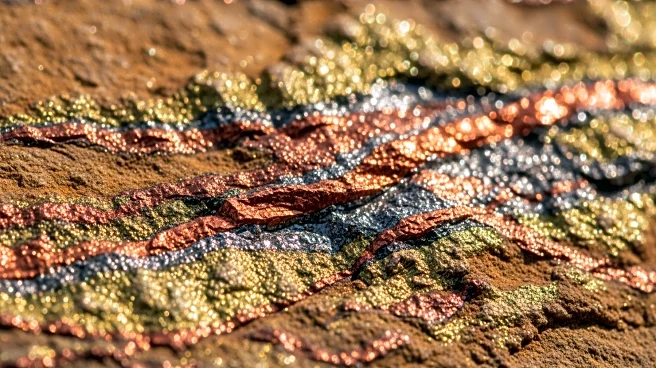What's Happening?
Q2 Metals Corp has reported significant mineralized intercepts at its Cisco lithium project in Quebec, Canada, utilizing Fleet Space's ExoSphere platform for real-time multiphysics imaging. The company
identified high-grade mineralization in drill holes CS25-036, CS25-038, and CS25-039, reinforcing the project's district-scale potential. The Cisco project spans over 41,000 hectares, with an exploration target ranging from 215 Mt to 329 Mt at a grade between 1% and 1.38% lithium oxide. The use of ExoSphere technology has enhanced targeting, resulting in expanded mineralization zones and plans for further drilling to support an initial resource estimate in 2026.
Why It's Important?
The successful use of ExoSphere technology in lithium exploration highlights the potential for advanced imaging techniques to improve resource identification and extraction efficiency. As demand for lithium continues to rise, driven by the growth of electric vehicles and renewable energy storage, projects like Cisco are crucial for meeting global supply needs. The high-grade mineralization results underscore the project's potential to become a significant lithium source, attracting investment and supporting the development of sustainable energy solutions. The advancements in exploration technology may lead to increased interest in similar projects and further innovation in the mining industry.
What's Next?
Q2 Metals plans to continue drilling at the Cisco project, with a fourth drill rig starting in October 2025 to support efforts for an initial resource estimate in 2026. The company aims to expand the known mineralization zone and enhance resource identification using ExoSphere technology. As the project progresses, Q2 Metals may seek partnerships or investment to accelerate development and production. The successful application of advanced imaging techniques could lead to broader adoption in the industry, improving exploration efficiency and reducing environmental impact.
Beyond the Headlines
The use of ExoSphere technology in lithium exploration represents a shift towards more sustainable and efficient resource extraction methods. As the demand for lithium grows, the industry faces challenges related to environmental impact and resource management. The adoption of advanced imaging techniques may help address these challenges, promoting responsible mining practices and reducing ecological footprint. The success of the Cisco project could influence industry standards and encourage further innovation in exploration technology, potentially leading to new opportunities for resource development.












